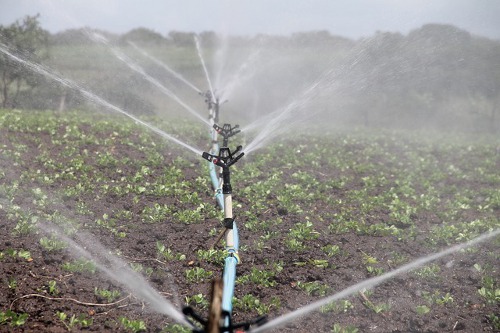Every landscape owner having plants and trees in their landscape needs an irrigation system. Watering the plants is essential for their growth and survival throughout the year. However, the watering requirements vary with season. Landscape owners need to adjust their irrigation systems to water their plants in every season.


Plants, trees, and shrubs need more water in summer than in winter. Plants need almost no water in the rainy season as they get enough from rains. Therefore, landscape owners need to know how to adjust their irrigation systems as per the watering requirements of their plants, shrubs, or trees. Let us know more about using the irrigation systems in the winter season.
Water according to the soil
The best way to water your crops in winter is to check the moisture in the soil. If the ground has enough moisture, you don’t need to water daily. Once or twice a week is enough for most plants and shrubs. Dig the soil using a tool up to 6 inches depth. If the soil is grainy and dry, you should water immediately; if it has some moisture, it is best to water once a week. If it is extremely damp like it rains, it does not need watering.
Temperature
Another thing you should know is water according to the temperature of your location. If the temperature in winter is between 10 and 20 degrees Celsius, you can water twice a week, and when it goes below 10 degrees, watering once a week would be sufficient.
When to water in a day
If your location witness frozen soil due to extremely cold weather, you should never water in the evening. Instead, water your plants on a sunny day, which lets the soil soak in water immediately, even though some of it will evaporate. Never water the crops on a cloudy day or in the evening, as the water could freeze before the soil absorbs it, and it can rot the roots of plants. Landscape owners can water their crops once a week on a sunny day.
Avoid overwatering
You should know the amount of water according to the types of plants, shrubs, and trees in your landscape. The requirements of every species of plants are different, but you need to know when to stop water supply to avoid overwatering. The soil should not stay soggy after watering for a long time, as it can cause rotting or roots.
Check if your lawn needs watering
You can water your lawn anytime in summer, but you need to check it in the winter. To avoid unnecessary watering, you can check by walking a few steps on the grass. Check your footprints on the grass. If they disappear immediately, you don’t need to water your lawn. If they are visible after walking, you should water your lawn immediately.
Check the temperature of your place
If the temperature of your location stays consistently below 25 degrees, your lawn is likely to stay dormant. So, you can store your sprinkler equipment and take it out only when required. However, you will need to move and water the grass in your lawn when the climate is mildly cold.
Some types of lawn grasses may stay dormant in mild winters. If the temperature in your location rarely drops below 30 degrees, you don’t need to minimize watering.
Use the right irrigation system
Using conventional irrigation systems leads to overwatering and wastage of water. The present-day irrigation systems, like drip irrigation and sprinkler systems, are highly efficient. They prevent the wastage of water and supply only the required amount of water. You can use ONGA water pumps with these systems that offer the right amount of pressure for your equipment.
Landscapers should use the sprinkler systems for lawns and drip irrigation for crops in their fields. Some modern irrigation systems have sensors that detect the requirements of water according to the moisture in soil and temperature conditions.
Tips for maintaining an irrigation system
Drain the irrigation system
If your location experienced freezing temperatures, you must drain your irrigation system after use every time. Any water left in pipes can freeze at low temperatures, and the pipes can burst in some cases.
Removing the water from pipes, and all parts of the system prevent any unwanted and major damage. You can use a drain valve, manual or automatic to drain the water out of the pipes to save them from freezing and bursting.
Install sensors on your irrigation system
If your irrigation system does not stop automatically, you must install sensors that detect the requirements of watering. They can measure the present temperature and moisture to supply only the required amount of water to your plants. Moreover, the sensors also shut off the supply when the requirement of water is fulfilled.
Final Words
These are the winter irrigation tips for landscape owners. Following these tips can help people to water their plants accurately and protect irrigation equipment in the winter season. Moreover, the right supply of water helps in the growth of plants and prevents wastage of water.









